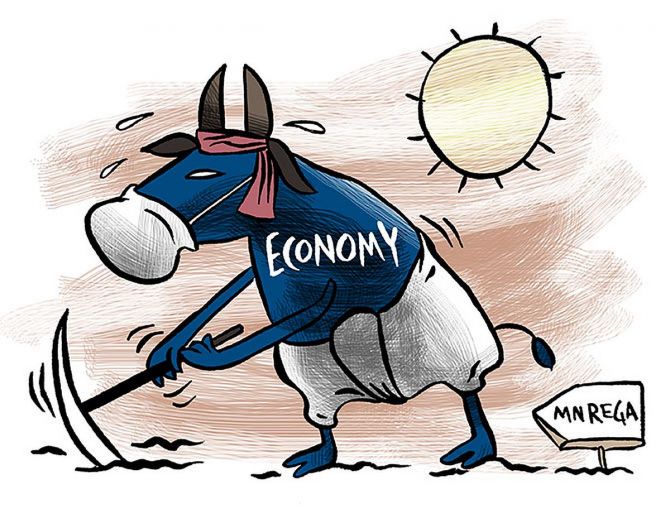However, demand was still much higher compared to the previous years, underlining the scheme’s vital role in providing employment to the rural poor, a vast majority of whom are migrants.

After seeing a surge in May and June, demand for work under Mahatma Gandhi Rural Employment Guarantee Act (MGNREGA) tapered a bit in July as casual labourers returned to work in farms for sowing kharif crops.
However, demand was still much higher compared to the previous years, underlining the scheme’s vital role in providing employment to the rural poor, a vast majority of whom are migrants.
Initial data, sourced from the MGNREGA website, shows that till July 31, around 31.5 million households had sought work under the scheme, which was almost 28 per cent less than the work demand in June.
But even after a fall in July, the total number of households demanding work under MGNREGA was almost 71 per cent more in July 2020 compared to July 2019, according to the data.
In July 2019, around 18.4 million households had sought jobs under MGNREGA, while in July 2020, the number jumped to 31.5 million.
This clearly reflects the massive demand for work under the scheme due to the Covid-19 lockdown.
Usually, MGNREGA work demand starts tapering off from July as kharif sowing season starts in rural areas and casual labourers get work in fields where wages are generally higher.
However, this year, though the demand has tapered off, it is among the lowest declines.
Sowing of kharif crops has started at a brisk pace this year because of strong performance of the southwest monsoon in June and July in most parts of the country.
Till July 31, kharif crops have been sown in around 88.21 million hectares, which is almost 14 per cent more than last year, the agriculture ministry’s data showed.
So far, in the first two months of the monsoon season, farmers across India have completed sowing of kharif crops in around 83 per cent of the normal area, which is among the best in recent times.
But, despite such good progress in sowing of kharif crops, demand for MGNREGA works hasn’t gone down sharply as compared to the previous years.
This, some experts say, is a reflection of the extent of distress.
“Demand for work under MGNREGA usually falls in July, August and September, as sowing activities start in rural areas and labourers get work in the fields.
"If the trend persists, it needs to be seen whether there is any artificial suppression of demand due to budgetary constraints,” Rajendran Narayanan, assistant professor at the Azim Premji University in Bangalore told Business Standard.
Some experts said with most work places beginning to start after Unlock 3, migrant labourers may prefer coming back as daily wages are higher than what they get under MGNREGA.
The MGNREGA website shows that around 245.23 million persondays of work has been provided under the scheme in July.
This is around 62 per cent less compared to June. But this is a provisional figure as lot of muster rolls take time to close.
In the first four months of this fiscal year, around 1.6 billion persondays of work has been generated under MGNREGA.
This is 53.3 per cent of the total budgeted persondays of work to be provided this year.
So far (April-July), the MGNREGA website shows that over 53 million households have got jobs under the scheme of which over 400,000 have completed their mandatory 100 days of employment.
Data shows that in the first four months of this fiscal year, over 50 per cent of the increased budget of Rs 101,500 crore has already been used.












 © 2025
© 2025